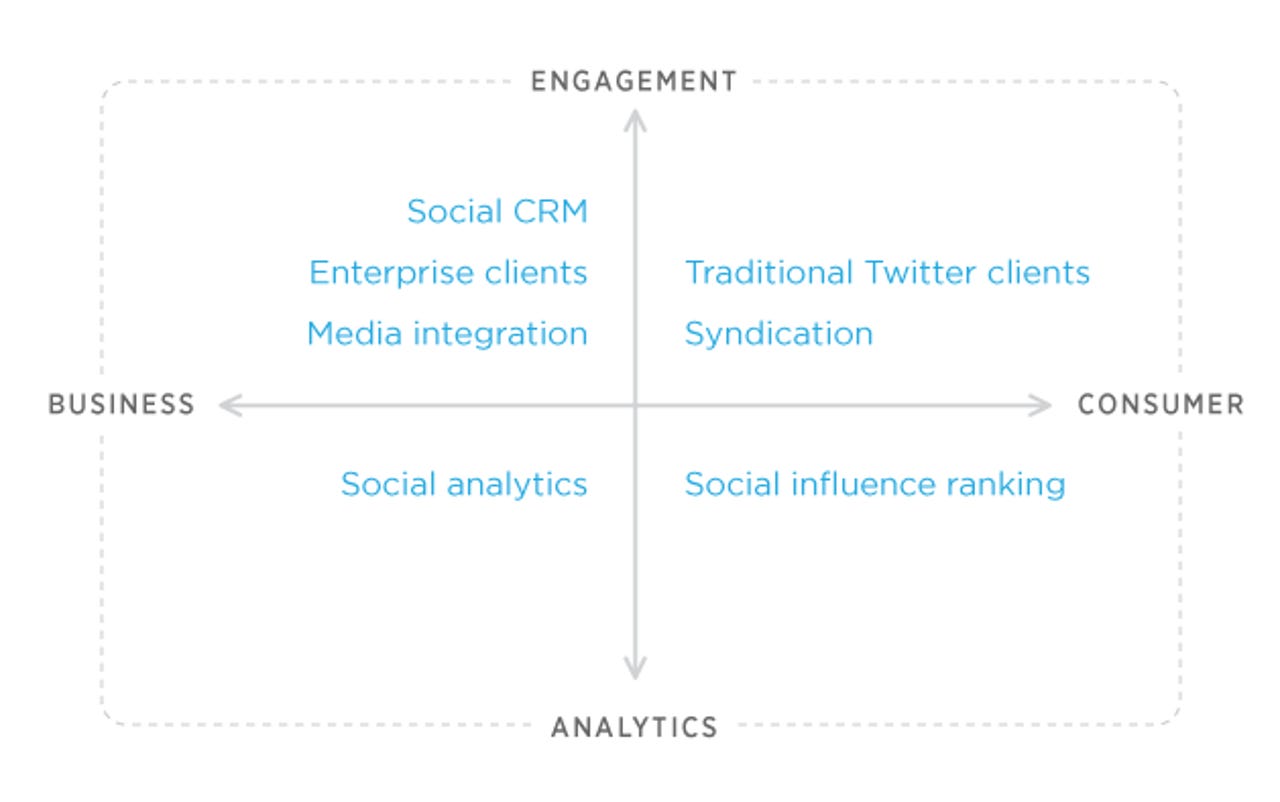Hootsuite acquires Seesmic as Twitter shifts focus to the enterprise

Twitter has indicated that it is focusing on enterprise applications and introducing stricter guidelines on how its api is used. Did this announcement spark HootSuite’s scramble to acquire Seesmic?
Larger companies acquire smaller companies for the technology innovations or customer base. Sometimes the ultimate goal of the acquisition is to purchase patents such as Google’s purchase of Motorola mobility in order to acquire its patents in 2011.
If a company does not have the requisite market share and is cash rich, then an acquisition makes good sense – especially if it wants to keep in Twitter’s good books.
Enterprise focus
Twitter has been moving towards an enterprise focus for some time now.
It acquired the UK’s Tweetdeck in May 2011 for over $40 million. Tweetdeck had lots of innovations such as including several timelines on the same piece of screen real estate. Facebook and LinkedIn feeds were all included in a comprehensive dashboard.
However, in changing the UI to give the users a ‘consistent experience wherever they see and interact with Tweets’ it upset its users. Twitter re-launched Tweetdeck to a torrent of complaints from loyal fans.
Last month Twitter announced that that it would introduce stricter guidelines for developers that access the Twitter api. It will also require pre-installed client applications, such as applications that run on mobile phones to be certified by Twitter – before the application ships to the consumer.
It is trying to encourage applications that focus on business engagement and business analytics. It is not encouraging activity in the consumer engagement segment of the Twitter partner graph.
According to the blog Twitter encourages ‘activity in the upper-left, lower-left and lower right quadrants, and limit(s) certain use cases that occupy the upper-right quadrant’.

At the start of 2011 Twitter advised developers ‘that they should not build client apps that mimic or reproduce the mainstream Twitter consumer client experience.’ And reproducing the mainstream consumer client experience was something that Loic Le Meur’s Seesmic did really well.
Seesmic was acquired by HootSuite earlier this month. Seesmic has been around since 2008, changing its strategy and business focus from video blogging, into aggregation as the market moved and becoming a consumer focused app with armies of followers.
So why did HootSuite buy Seesmic? Both client apps allow users to manage multiple accounts from Facebook and Twitter and post from multiple accounts.
HootSuite could have hardly bought Seesmic for its consumer users. HootSuite with over 4 million users is an order of magnitude larger than Seesmic’s ‘hundreds of thousands of active users’. The interfaces are similar in UI and function. Each tool has its fans and detractors; each has its own unique features that users love.
Buying market share
So why do companies such as HootSuite acquire companies with similar product sets and offerings to themselves? Do they buy the knowledge and experience of engineers and staff?
Often the staff that are working for the company that has been acquired do not have retention clauses in their new contracts. They are free to leave as soon as the cash comes through.
Perhaps these companies sweep up all competition in order to cement their market share and compete with the brand leader. But HootSuite’s dashboard might not appeal to Seesmic’s customers who might move onto other analytics tools.
The HootSuite blog indicated it was buying Seesmic for its business and enterprise customers -- to add to its portfolio and to ‘further reinforce HootSuite’s position in the upper left quadrant of the Twitter Partner graph’
This makes sound business sense for HootSuite as it stays focused on its business customers and aligns itself with Twitters goals for the enterprise.
Twitter is a powerhouse that can modify its api as it sees fit in order to attract the revenue it needs from its enterprise partners. Focusing its attention on the business community and on analytics will bring it better returns than focusing on the user community.
But without the community adding to Twitters massive data store, there will be no quality data left to analyse.